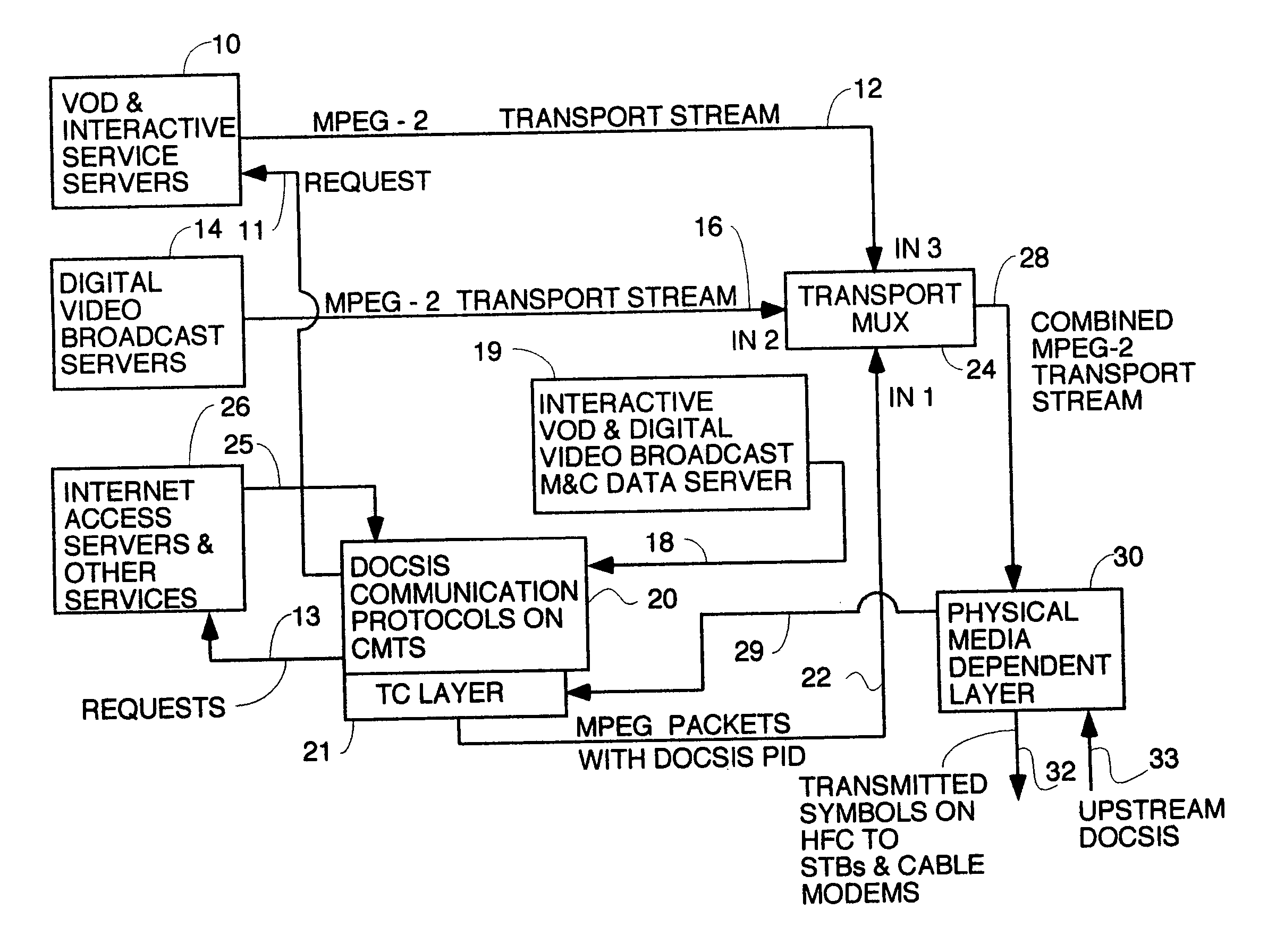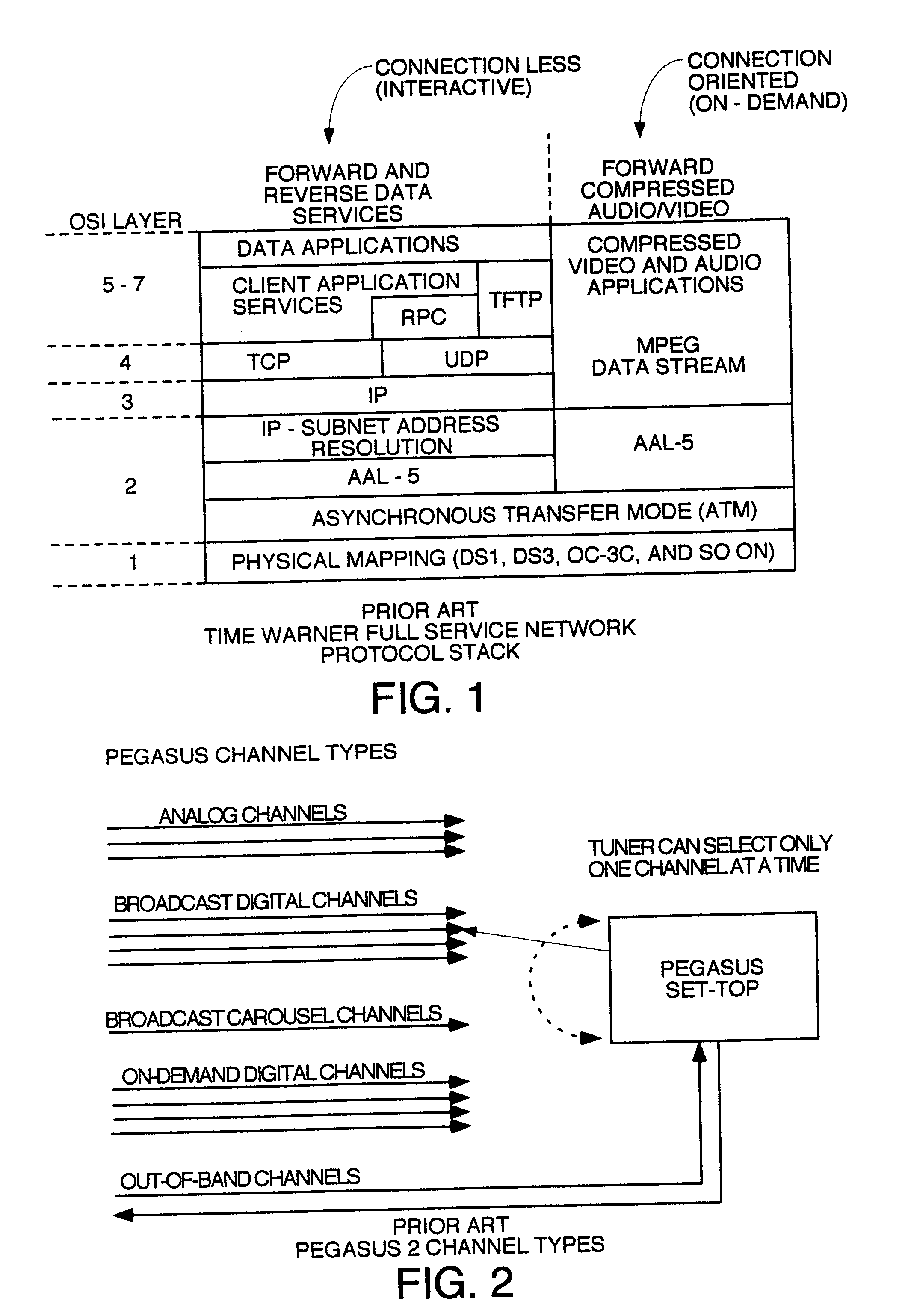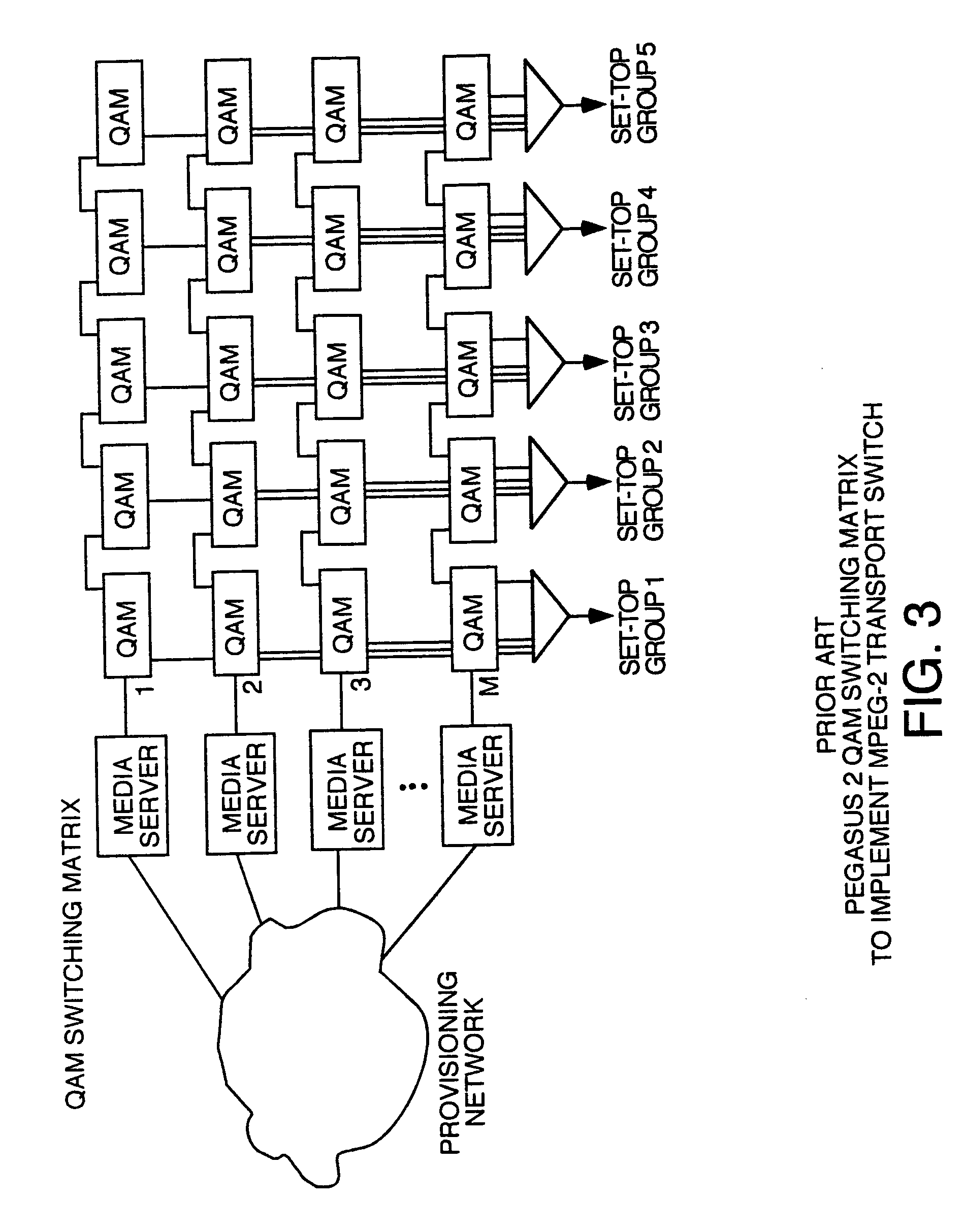At least two major problems exist in the FSN and Pegasus prior art.
A significant
disadvantage is that
software download increases greatly the amount of upstream network traffic from the STB to the
server telling the
server what
application software to download each time the user presses a button to change the channel or invoke any other service.
With thousands of STB and with an out-of-band channel carrying this upstream traffic with limited bandwidth, many problems are caused.
Among them are contentions and delays for the available bandwidth and the complications and expense of a separate
media access control protocol and separate
tuner just for the OOB channel to carry management traffic.
Small applications can be downloaded over a high speed channel in a fraction of a second, but downloading a large application introduces delays and consumes large amounts of network capacity.
Also, if a download
server or channel is unavailable, the customer will see a loss of service.
Making the navigator application resident on the STB reduces this problem but makes the STB more expensive.
This causes delays in waiting for the right files and consumes network downstream bandwidth unnecessarily when the need by STBs for files is light.
Also, an out-of-band channel providing point-to-point service between the server and the STB can also be used, but this requires the STB to have a separate
tuner and MAC protocol just for the OOB channel thereby making the STB more expensive.
Further, the OOB downstream channel can easily become overwhelmed by the
software download traffic if used to download applications for all the interactive and
on demand services.
Another major problem with all the FSN, Pegasus and Digicable prior art systems was the use of out-of-band channels to communicate
system information.
Some prior art cable systems have used in-band delivery of
system messages as part of the 6 MHz channel, but the conventional wisdom is that in-band delivery has several significant problems.
Simulcasting on every channel consumes a considerable amount of system bandwidth and requires message
insertion equipment for every channel thereby making the head end more complex and expensive.
Further,
NTSC analog channels have very limited (about 9,600 bits per second) capacity to carry digital information in the
vertical blanking interval.
In large systems, this causes considerable
queuing delay because of the volume of system messages.
Digital channels provide a considerable increase in
data capacity, but system messages must be delivered regardless of whether the STB is tuned to an analog or a
digital channel so it is impossible to take
advantage of the increased
payload of digital channels.
This problem can only be solved by including in the STB separate tuners for the analog and digital channels, but this increases the cost of the STB.
Because there is no real time upstream in a DBS system, the headend does not know to which channels various tuners in the system are tuned.
However, an OOB channel requires a separate
tuner in the STB which complicates it and renders it more expensive.
Early OOB channels were limited in-bandwidth, but with higher rate
silicon chips now available, system messages only occupy 10% of OOB
channel capacity.
However, each STB still needs an OOB tuner and an upstream MAC protocol in addition to the tuners for the digital and analog forward channels so the STB is more expensive than it needs to be.
However, an OOB still requires a separate tuner in the STB and circuitry and software to implement these protocols thereby complicating the STB.
This system still needs two tuners in each STB, one for the video and the other in the DOCSIS modem within the STB and still suffers from the disadvantages of having to use an out-of-band channel.
The simulcast of data carousels of system management data,
conditional access keys, application programs, program guide data, etc. even on an OOB channel is wasteful.
Most of the consumed downstream OOB bandwidth is wasted because the STBs that are in operation at the time and tuned to the OOB channel do not need most of the information which is in the data carousel.
Downloaded application programs are authenticated so pirated applications that do not pass the
authentication process cannot be executed.
None of these prior art systems supports a single tuner in the form of a modified DOCSIS
cable modem in the STB with an always on upstream channel using a pure DOCSIS channel transmitted by the DOCSIS
cable modem and a downstream M&C channel using the DOCSIS PID which is also recovered by the DOCSIS
cable modem.
The simplification of the set top decoder (STB) is highly significant because the costs of deploying millions of complex STBs nationwide are prohibitive to cable operators, and will slow penetration of the interactive and VOD services over HFC into the nationwide market.
Current conditional access requires each STB to have a
smart card or other
embedded security circuitry in each STB which adds cost to the STB.
 Login to View More
Login to View More  Login to View More
Login to View More 


